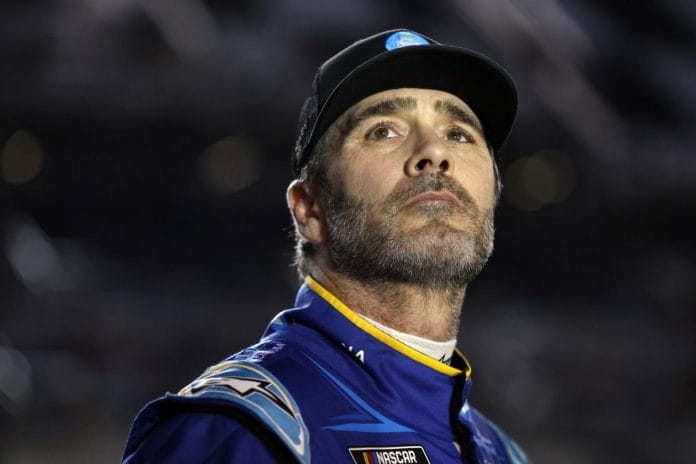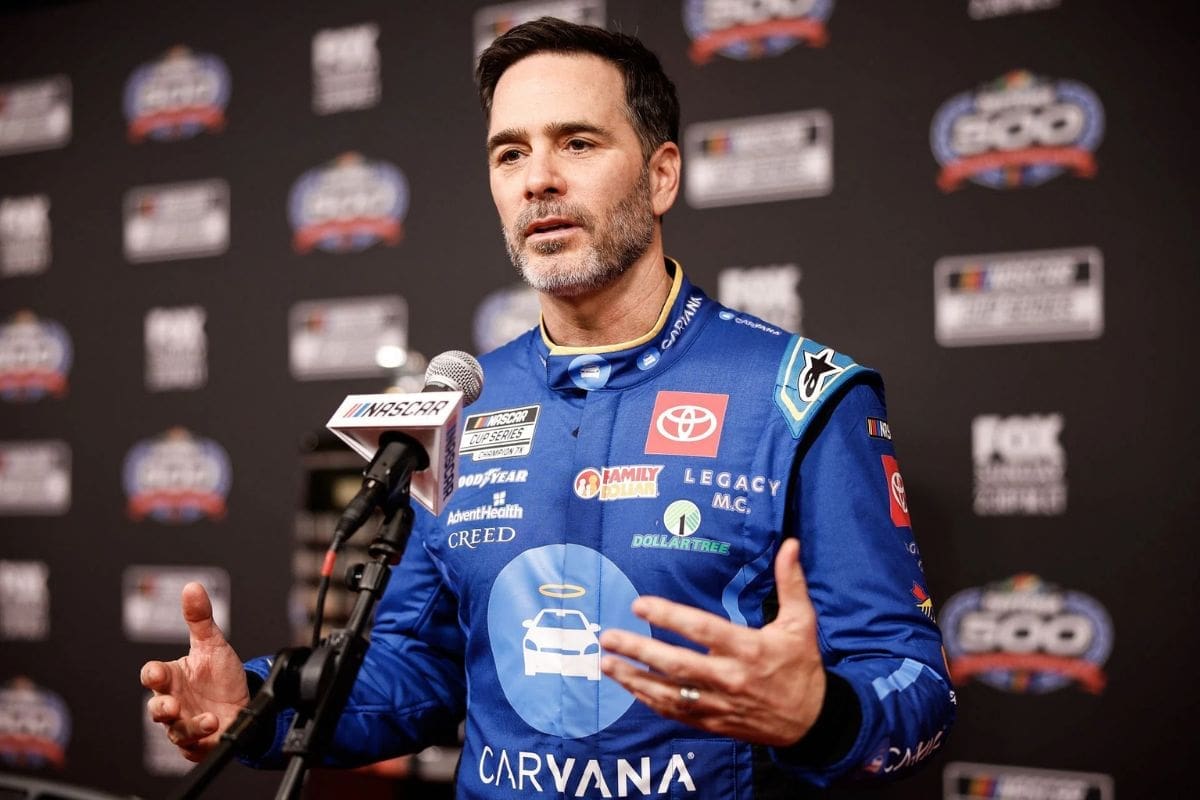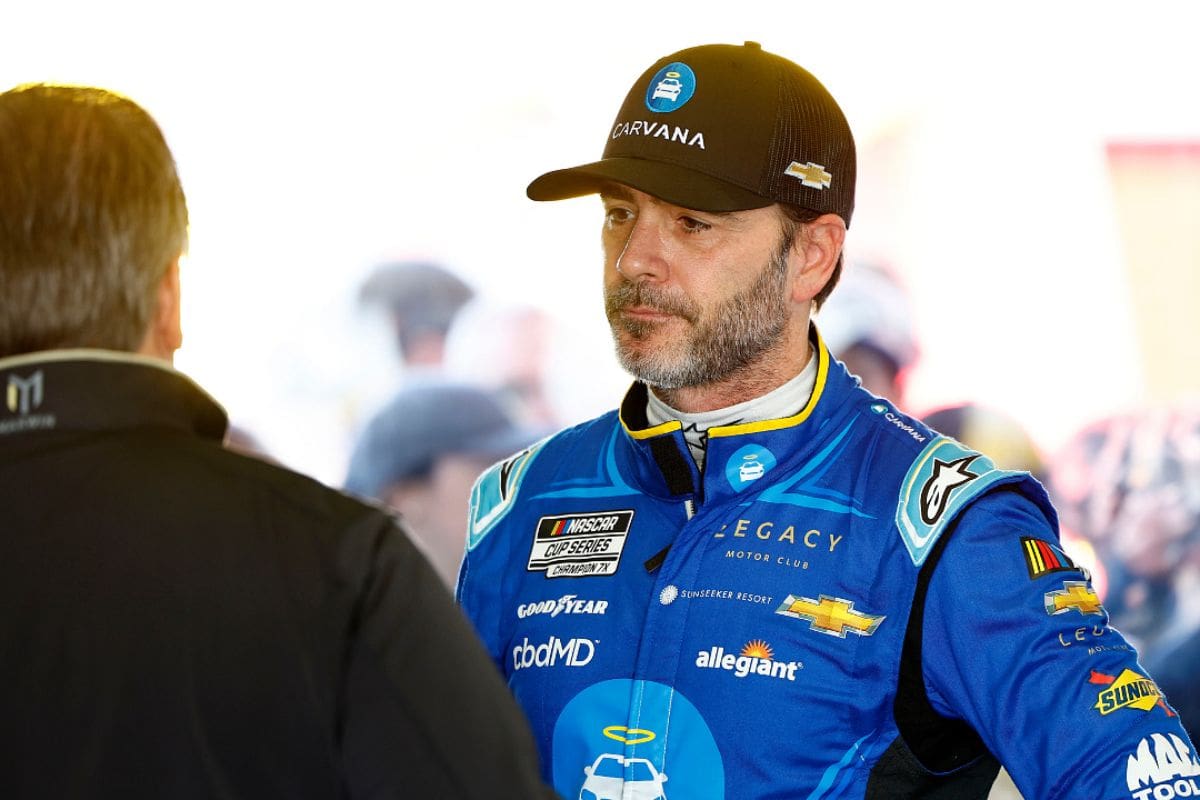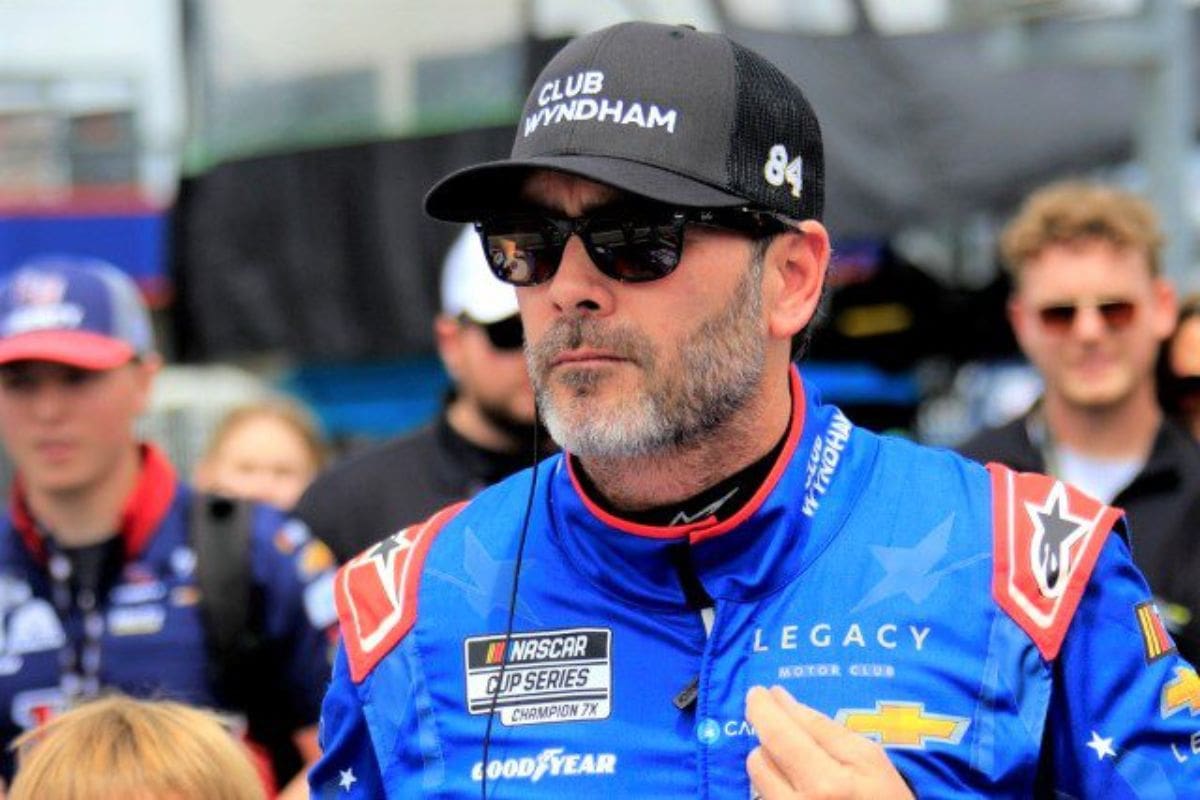Jimmie Johnson’s 2.5 million Dollars Crash: Jimmie Johnson‘s recent crash at the Goodwood Revival, resulting in staggering damages of $2.5 million, has not only raised eyebrows but also incited a wave of frustration among NASCAR fans. This incident has prompted a critical examination of Johnson’s pursuit of speed, igniting discussions surrounding risk management in motorsport and the broader implications for his team. As fans grapple with their concerns over safety and financial consequences, the narrative surrounding Johnson’s career takes a complex turn—one that begs the question: what does this incident reveal about the demands faced by elite drivers in a competitive landscape?
Key Highlights
- Fans expressed disappointment over Jimmie Johnson’s push for better lap times, viewing it as reckless and a contributor to the crash.
- The $2.5 million damage to the rare Aston Martin DB4 GT Lightweight raised concerns about financial risk and accountability in racing.
- Emotional reactions included disbelief and humor, reflecting the strong attachment to Johnson’s legacy and the desire for a comeback.
- Criticism centered on Johnson’s decision-making, with many suggesting a “curse” affecting his performance and raising safety concerns.
- The incident reignited discussions on NASCAR’s safety measures, highlighting the need for improved regulations and driver protection following crashes.
Jimmie Johnson Takes on Goodwood Revival
As Jimmie Johnson commences his latest racing endeavor at the prestigious Goodwood Revival, he is not merely participating in another event; he is stepping into a rich tapestry of motorsport history. The Goodwood Revival, renowned for its celebration of vintage racing, serves as a backdrop for the 7-time NASCAR Cup Series champion to exhibit his versatility and passion for the sport.
Competing for the Stirling Moss Memorial Trophy, Johnson takes the wheel of the No. 46 Aston Martin DB4 GT Lightweight, a vehicle steeped in legacy and nostalgia. This car, which initially captured the public’s imagination when driven by the legendary Stirling Moss to victory in 1960, represents not just a moment in racing history but a link to the artistry of motorsport.
Johnson’s involvement with such a storied automobile highlights his commitment to preserving and honoring the heritage of racing, expanding his canvas beyond the oval tracks of America.
This shift from NASCAR to a classic European racing event epitomizes Johnson’s desire to broaden his horizons and engage with different facets of motorsport. The Goodwood Revival is not only a test of skill but also a narrative of legacy, where each turn on the track resonates with the echoes of past champions.
Johnson’s Strong Start and Unexpected Crash
Frequently navigating the unpredictable nature of motorsport, Jimmie Johnson had initially displayed remarkable skill during the practice session at the Goodwood Revival, clocking an impressive best lap time of 1:56 moments despite the challenging, rain-soaked conditions.
His ability to adapt and push the limits of his Aston Martin under such adverse weather was indicative of both his experience and competitive spirit. While other drivers struggled to find their footing in the slick conditions, Johnson’s early performance set a high benchmark, showcasing his expertise on a track notorious for its demanding layout.
However, the fickle nature of racing soon reared its head. As Johnson sought to further improve his lap time, he miscalculated the subtleties of the evolving track.
“From one lap to the next, the track had changed. And after I ran 3-4 laps out there, I felt the track was in a stable place,” he reflected. This confidence, however, proved premature when a sudden accumulation of water and a hidden puddle conspired against him, causing the car to slide uncontrollably into the tire barriers.
Just some rainfall, a puddle there got the best of me, unfortunately.” – Johnson
The incident served as a clear reminder of the inherent risks in motorsport—where even the most adept drivers can fall victim to unforeseen circumstances. Johnson’s unexpected crash not only disrupted his promising start but also reignited discussions about the unpredictable elements that define racing and challenge even the most seasoned professionals.
Fan Reactions to Johnson’s Luck and the Crash
Amidst the swirling emotions of motorsport fandom, reactions to Jimmie Johnson’s recent crash revealed a complex tapestry of disappointment and disbelief. As a beloved figure in NASCAR, Johnson’s current streak of misfortunes has left fans grappling with a sense of loss for the driver they once considered invincible. His inability to achieve a top-20 finish in the last six races has become a troubling narrative, drawing both concern and skepticism.
If you told me 20 years ago that Jimmie would be wrecking more cars than the Sauter brothers I would’ve laughed in your face but here we are.”- fans’ reaction
Johnson’s crash during a practice session only fueled the fire, prompting reactions that ranged from humor to genuine worry for his safety and the car’s integrity. The contrast of nostalgia for his past successes against the current reality of frequent crashes has left many fans in a state of turmoil. As Johnson continues to battle this “curse” on and off the track, the motorsport community watches with bated breath, hoping for a turnaround that rekindles the magic of his storied career.
Criticism and Concerns Over the Car’s Value
Critiquing Jimmie Johnson’s recent performance inevitably brings the value of his vehicle into sharp focus, particularly given the staggering worth of the Aston Martin DB4 GT he was piloting. This iconic car, a rarity among racing machines with only 75 touring-bodied units ever produced, carries an estimated value of $2.5 million.
More significantly, Johnson was behind the wheel of one of just six Right-Hand Drive “Lightweight” versions, highlighting its unique status within the automotive world.
The incident has ignited a firestorm of criticism among fans, many of whom express incredulity at Johnson’s decision to push for a better lap time while leading the race by nearly three measures. Comments such as, “Why was he pushing though?” highlight a fundamental concern regarding risk management in high-stakes racing.
The inherent value of the car amplifies this discourse; the notion of a $2.5 million vehicle colliding with a tire barrier raises eyebrows and questions about the judiciousness of competitive tactics.
For fans, the emotional response is tied to the financial implications of such a crash. One observer poignantly remarked, “That is the sound of money flying out of someone’s wallet,” summarizing the anxiety surrounding the potential repair costs.
This incident transcends mere racing; it evokes a broader conversation about the intersection of financial investment and competitive integrity in motorsports, challenging both fans and professionals to reassess their understanding of risk versus reward in the arena of NASCAR.
Positive Perspectives and Future Speculations
While the recent incident involving Jimmie Johnson has sparked considerable backlash among fans, it also opens a dialogue about the potential positive outcomes that could arise from this event. The crash, involving a vintage Aston Martin once driven by F1 legend Stirling Moss, adds a compelling chapter to its storied history.
As collectors and enthusiasts recognize, the narrative surrounding a car is often as valuable as its physical condition. Johnson’s connection to the vehicle not only heightens its allure but also increases its value as it becomes an emblem of racing legacy.
Fans have expressed that rather than lamenting the incident, they see it as a badge of honor, indicative of the car’s true purpose: competition. The idea that a historic car should be raced rather than stored in a museum resonates deeply within the racing community. This philosophy emphasizes the notion that every scratch and dent tells a story of ambition and bravery.
“If a seven-time NASCAR champion scuffed up my car during a track day, I’d take that as a badge of honor.”
“I always say that I’d rather a historic car be raced and crashed than rust away in a museum. Luckily this one wasn’t too heavy though.” – fans reaction
Looking forward, the question remains: will this misstep hinder Johnson’s performance in the main event, or will it galvanize him to push beyond his current limitations? A resilient champion, Johnson has shown an ability to bounce back from challenges.
If he can channel this experience into a renewed focus, it could propel him to not just participate but to excel in future races. Ultimately, this incident may serve as a catalyst for both Johnson’s career and the broader narrative of racing history, illustrating that even setbacks can contribute meaningfully to a legacy.
News in Brief: Jimmie Johnson’s 2.5 million Dollars Crash
The incident involving Jimmie Johnson at the Goodwood Revival emphasizes the complex interplay between ambition and risk in motorsport. The notable financial consequences of the crash, coupled with fan outrage, highlight the broader implications of performance-driven decisions. As competitive strain mounts, the potential for a perceived “curse” adds a layer of intrigue to Johnson’s career path. Moving forward, the balance between pursuing speed and ensuring safety will remain a critical consideration for both drivers and teams in the NASCAR community.
ALSO READ: Jimmie Johnson Faces Backlash From Fans Over Controversial Dale Earnhardt Comparison





